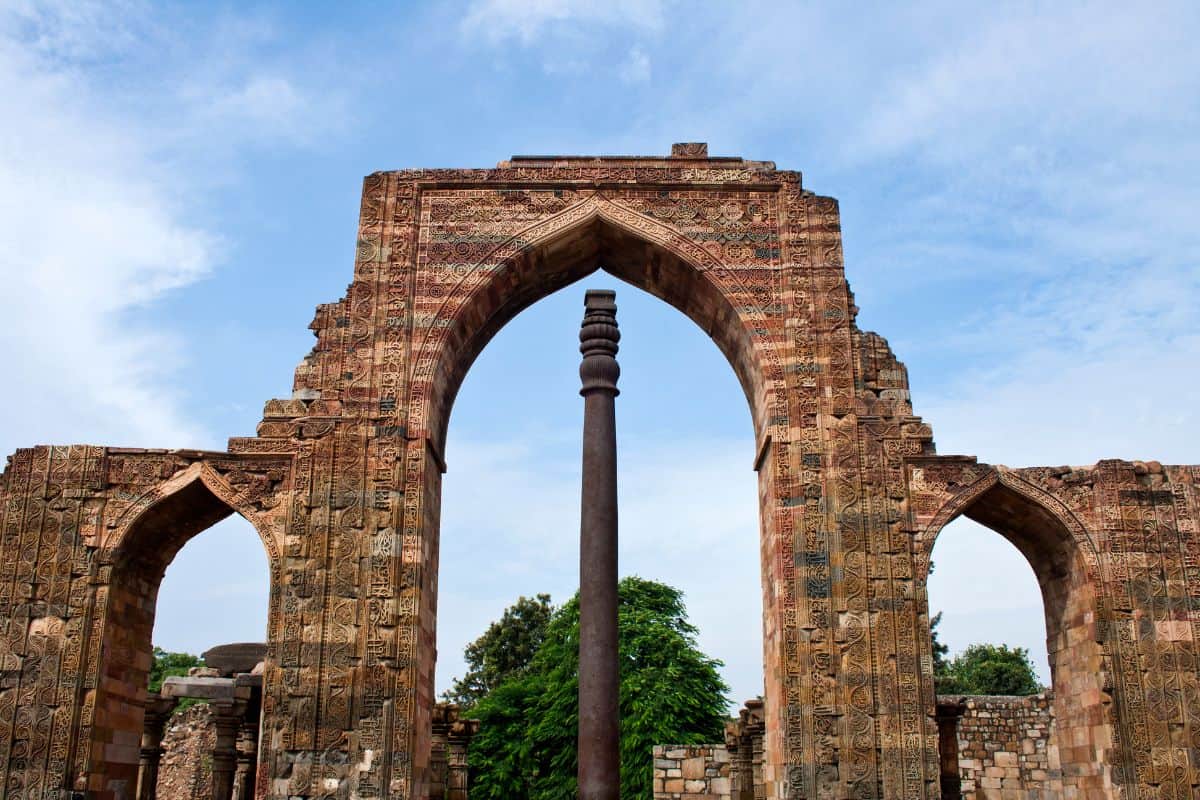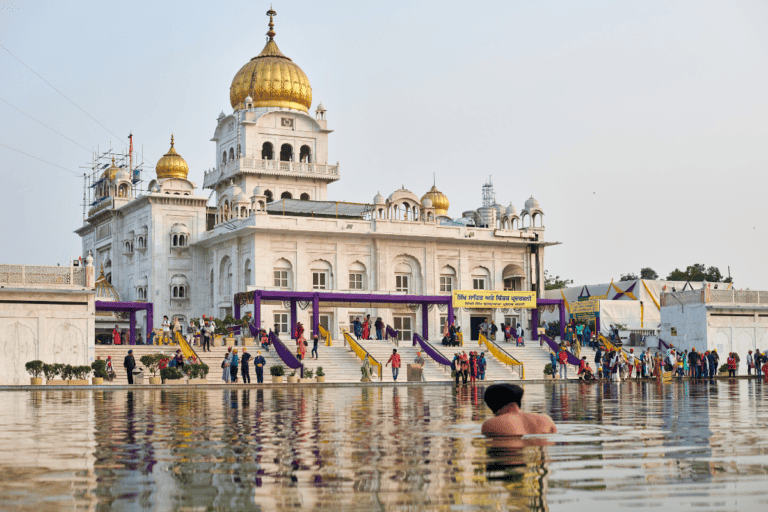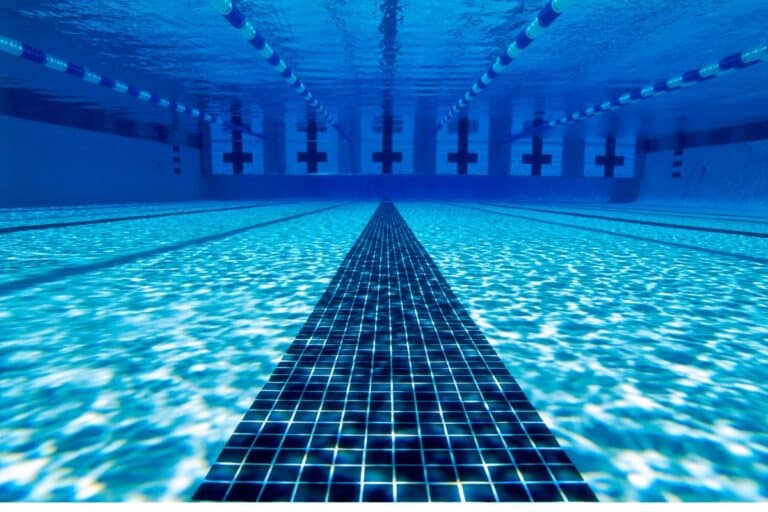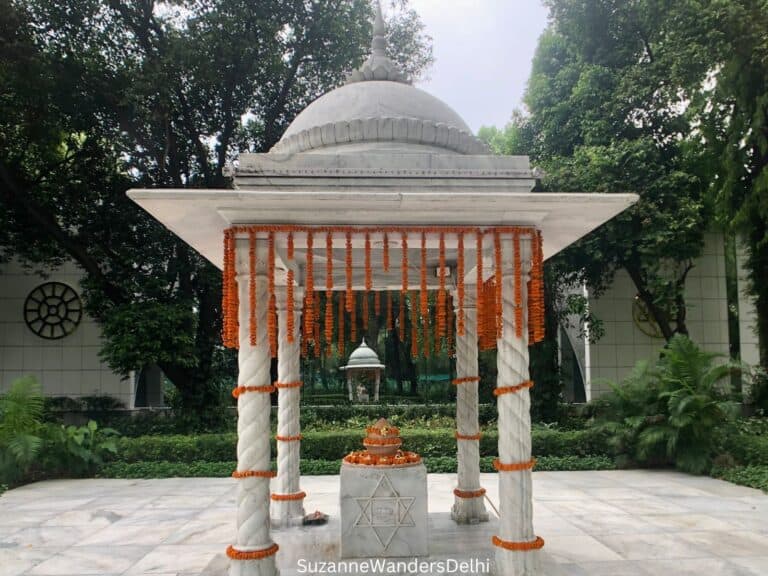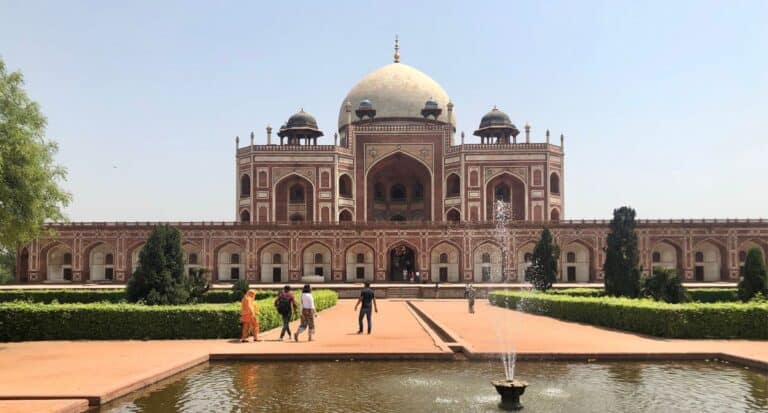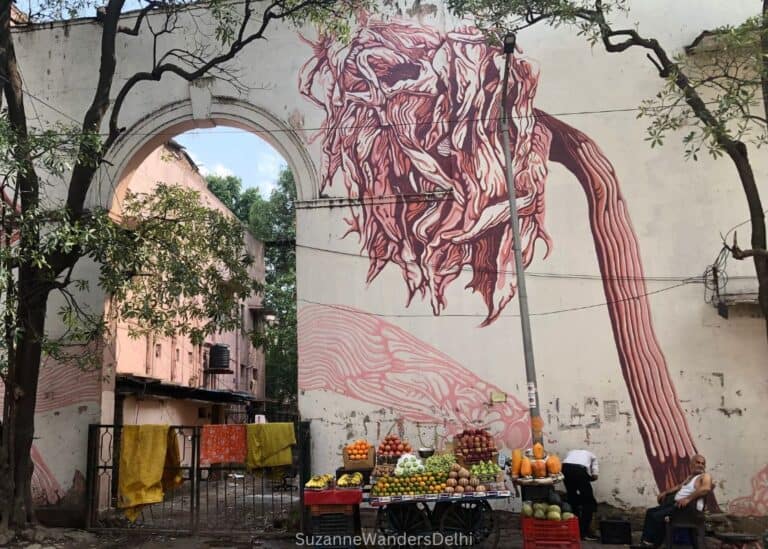Iron Pillar of Delhi: the Truth About the Pillar at Qutub Minar

Have you heard of the mysterious Iron Pillar of Delhi? It’s an iron pillar from the time of Chandragupta II, who ruled India between 375 and 415 AD. That makes the iron pillar 1,600 years old! In all those years, it has never rusted, something that has confounded scientists and historians.
The Iron Pillar of Delhi is located in my favourite of the UNESCO world heritages site in Delhi, the Qutub Minar. I have visited many times, and you can easily see both attractions at the same time.
Visiting the Iron Pillar of Delhi: Overview
The Iron Pillar of Delhi is still mystifying historians, scientists and visitors. It is considered one of the greatest feats of ancient engineering.
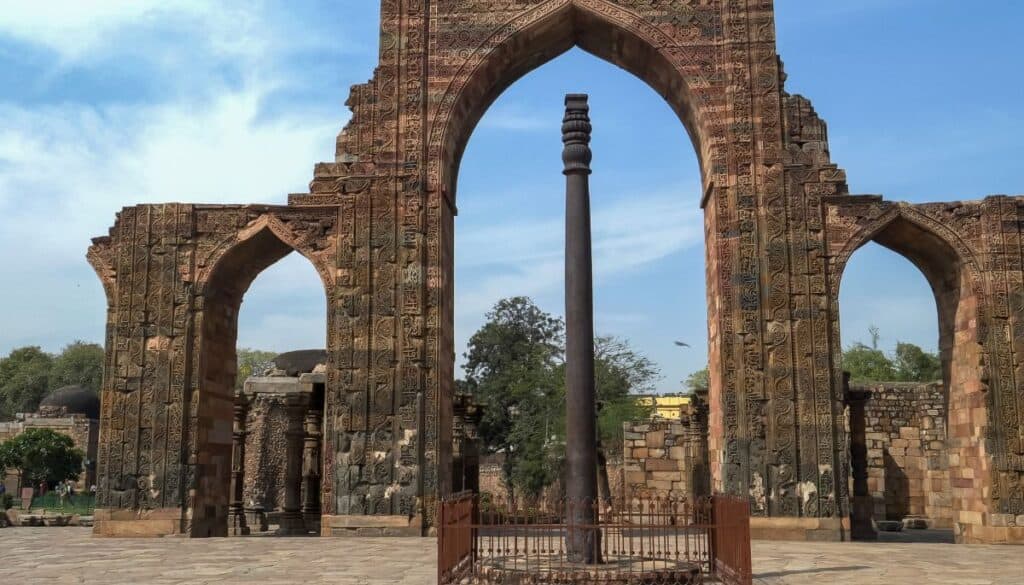
Experts analyzed the metallurgic composition of the iron pillar to shed some light on why it has never rusted, despite the extreme weather of Delhi. And while scientific analysis answered some questions, more remain.
Were iron workers that advanced 1,600 years ago, or was this some kind of lucky accident? How did the metal pillar get to its current location? What do the ancient inscriptions on the pillar mean? These are questions we may never have answers to.
At one point, it was even suggested extra-terrestrials might be responsible for the iron pillar of Delhi! This has since been refuted.
Hours: 9:00 am to 8:00 pm, daily
Cost: INR 600 for foreigners, children under 15 free (tickets are INR 550 if purchased online on the Archeological Survey of India website)
Location: Qutub Minar Complex, Seth Sarai, Mehrauli, Delhi
What To Expect
The iron pillar is located within the Qutub Minar complex, a UNESCO sight. It is in the courtyard of the Quwwat-ul-Islam mosque, one of the oldest mosques in India.
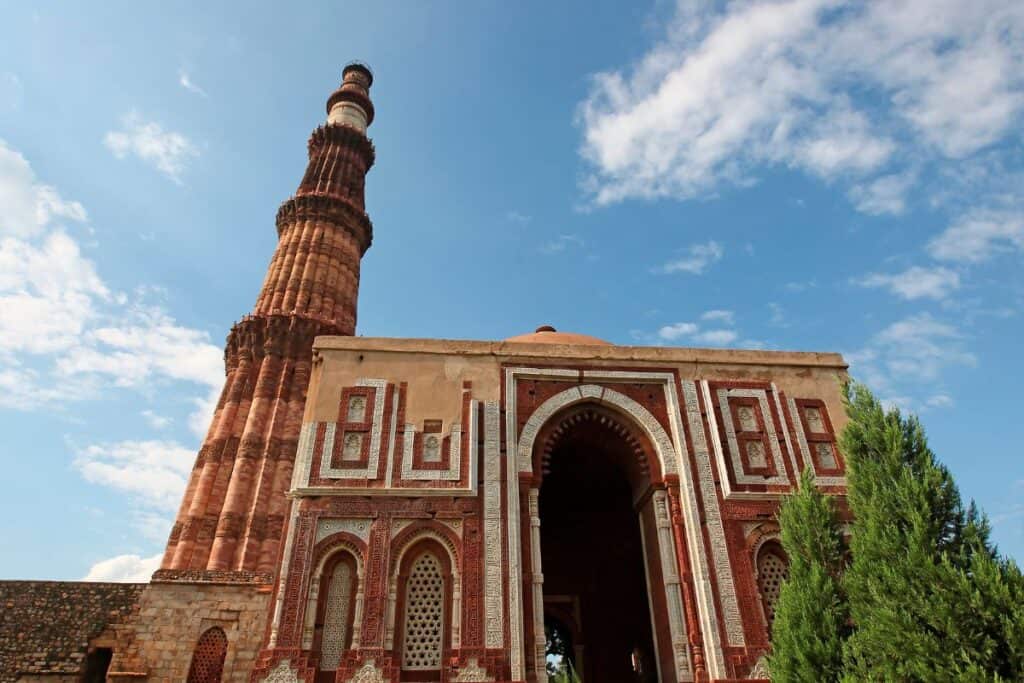
The iron pillar itself does not take long to see, but I assume you’ll want to see the rest of the Qutub Minar complex while you’re there. The Qutub complex is not that large, most visitors manage to see everything in less than 2 hours.
There is some walking, but not a huge amount. The site is relatively compact. There are toilets facilities. Bring water and a hat because there is not a lot of shade, and it is entirely outside. You’ll have to buy a ticket for the Qutub Minar to see the iron pillar.
The History of the Iron Pillar of Delhi
The iron pillar was constructed between 375 and 415 AD, during the reign of Chandragupta II, one of the most important Gupta emperors.
It is believed the pillar was erected elsewhere in India and moved to its present location by Anangpal Tomar in the 11th century. How it was moved is another mystery, as the pillar weighs 6 tons.
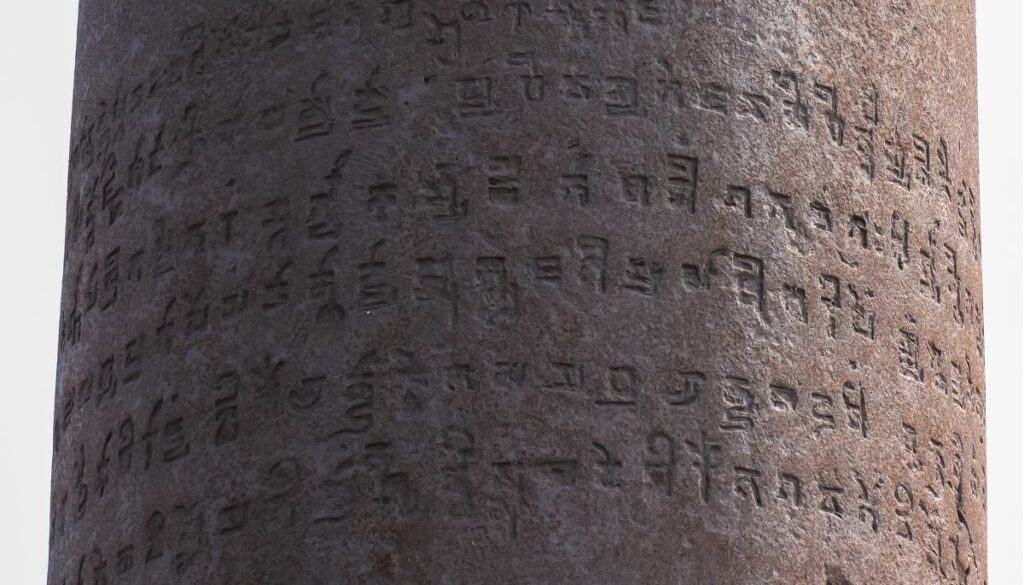
Inscriptions on the pillar are in Sanskrit, and like everything about the pillar, have been the subject of much debate. Historians cannot agree if Chandragupta II was already deceased or alive when the pillar was constructed, where the pillar was erected originally, or even when it was moved to the Qutub Minar and by which emperor.
It’s believed anyone who stands with their back to the pillar and can wrap their arms around it will have good luck. Unfortunately, so many visitors were trying to do this, a fence was erected around the pillar to prevent any possible damage to it.
How To Get To Qutub Minar to See the Iron Pillar
The iron pillar at Qutub Minar is in the far south section of Delhi. The easiest way to get there is by Delhi metro (Qutub Minar or Saket station on the Yellow line are the closest), or by Uber.
If you take the Delhi metro, you’ll have to grab an auto rickshaw from the station to the Qutub Minar entrance. This should cost no more than INR 80. Delhi has a great metro system, and it’s very user friendly. Here’s how to use the Delhi metro.
There is Uber in Delhi and it’s widely used and reliable. You’ll need data on your phone to utilize it, but you can pick up an inexpensive SIM card at the airport on arrival. Ola is another app based ride share program used a lot in Delhi. Both are cheap.
Where To Stay
Delhi is a massive city, and there are many accommodation options. Here are my favourites that are well located for exploring the area of Delhi where the iron pillar is located.

📍Tree of Life (budget) – this is a lovely bed and breakfast with views of the Qutub Minar. The Qutub complex is less than 2 km from Tree of Life and only a 10 minute drive. Rooms are clean and comfortable with ensuite bathrooms, free Wi-Fi and plenty of hot water. It’s located on a quiet residential street. The metro is within walking distance.
👉 Click here to book Tree of Life!
📍Sheraton New Delhi (mid-range) – a wonderful full service hotel ideal for tourists and business travellers. It’s close to a metro station and next to two of Delhi’s best shopping malls with plenty of dining and entertainment options. The Sheraton even has a chocolate boutique!
👉 Click here to book Sheraton New Delhi!
📍Leela Palace New Delhi (luxury) – this is one of Delhi’s most luxurious hotels. It’s a beautiful property in the greenest part of New Delhi. You can expect exceptional service and comfortable, well-appointed guest rooms. If you stay here you may not want to leave to explore the city.
👉 Click here to book Leela Palace New Delhi!
FAQs
These are the most asked questions about the Iron Pillar of Delhi:
What Is the Iron Pillar in Delhi Famous For?
The Iron Pillar of Delhi is most famous for not rusting in 1,600 years. This has only added to the mystery surrounding the pillar, which has made it one of the most famous sites in Delhi.
Why did the Iron Pillar in Delhi not Rust?
Scientific testing indicates the pillar has a high level of phosphorus in the metal, which is resistant to corrosion. Ancient Indian metal workers did not add lime to their furnaces, which results in higher phosphorus.
How Old is the Iron Pillar in Delhi?
Delhi’s iron pillar is around 1,600 years old. The exact age is unknown. Historians have not been able to confirm if the pillar was created during, or after the reign of Chandragupta II.
The Wrap-up on Iron Pillar of Delhi: the Truth about the Pillar at Qutub Minar
Even today, the Iron Pillar of Delhi is steeped in mystery. There are many theories about its age, purpose, where it was built, when and how it ended up at the Qutub Minar, but nobody really knows. For now it will remain one of the greatest mysteries in India’s history.
Don’t forget travel insurance! It’s always a good idea to carry travel insurance just in case something goes wrong. I really like and use SafetyWing
